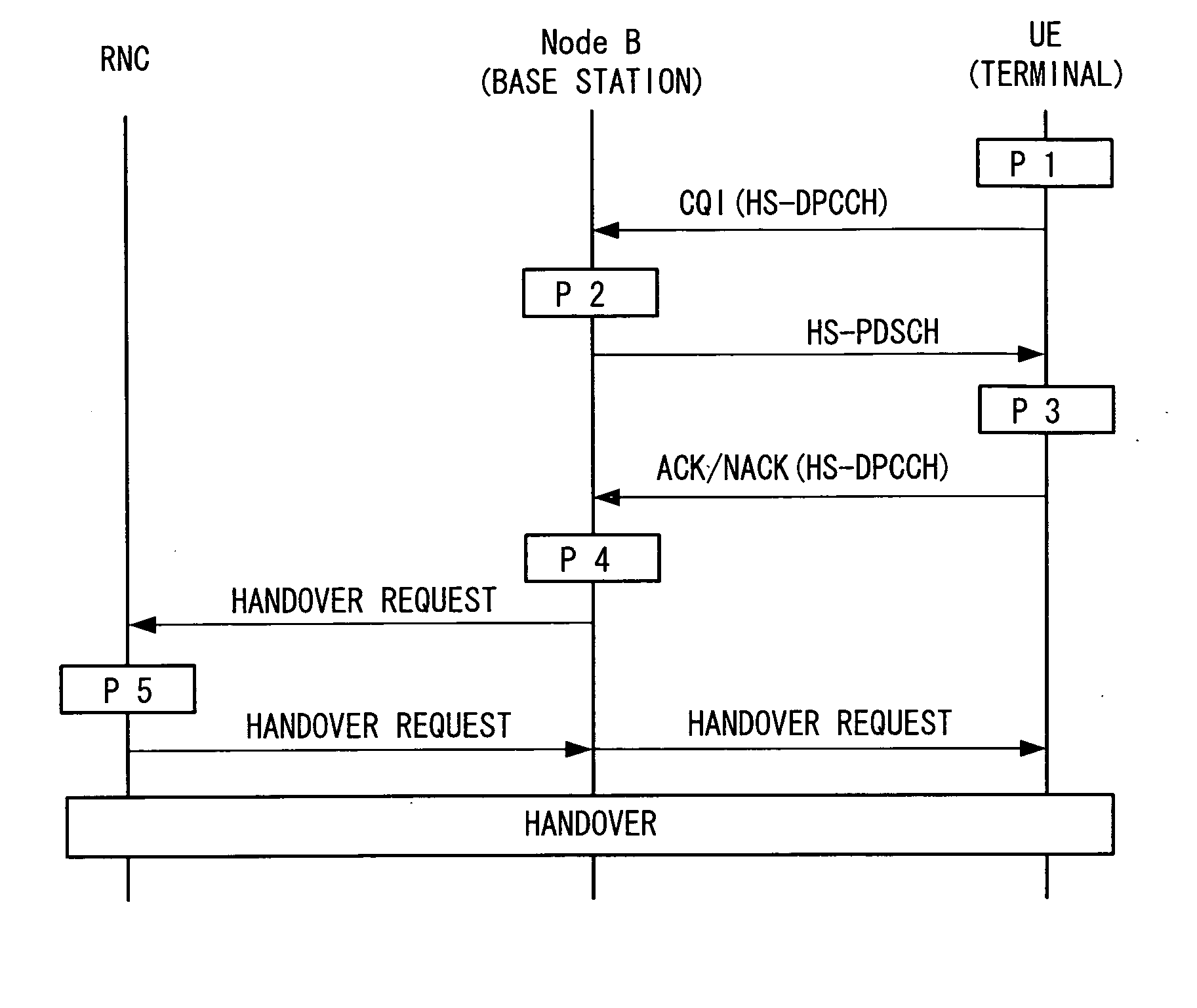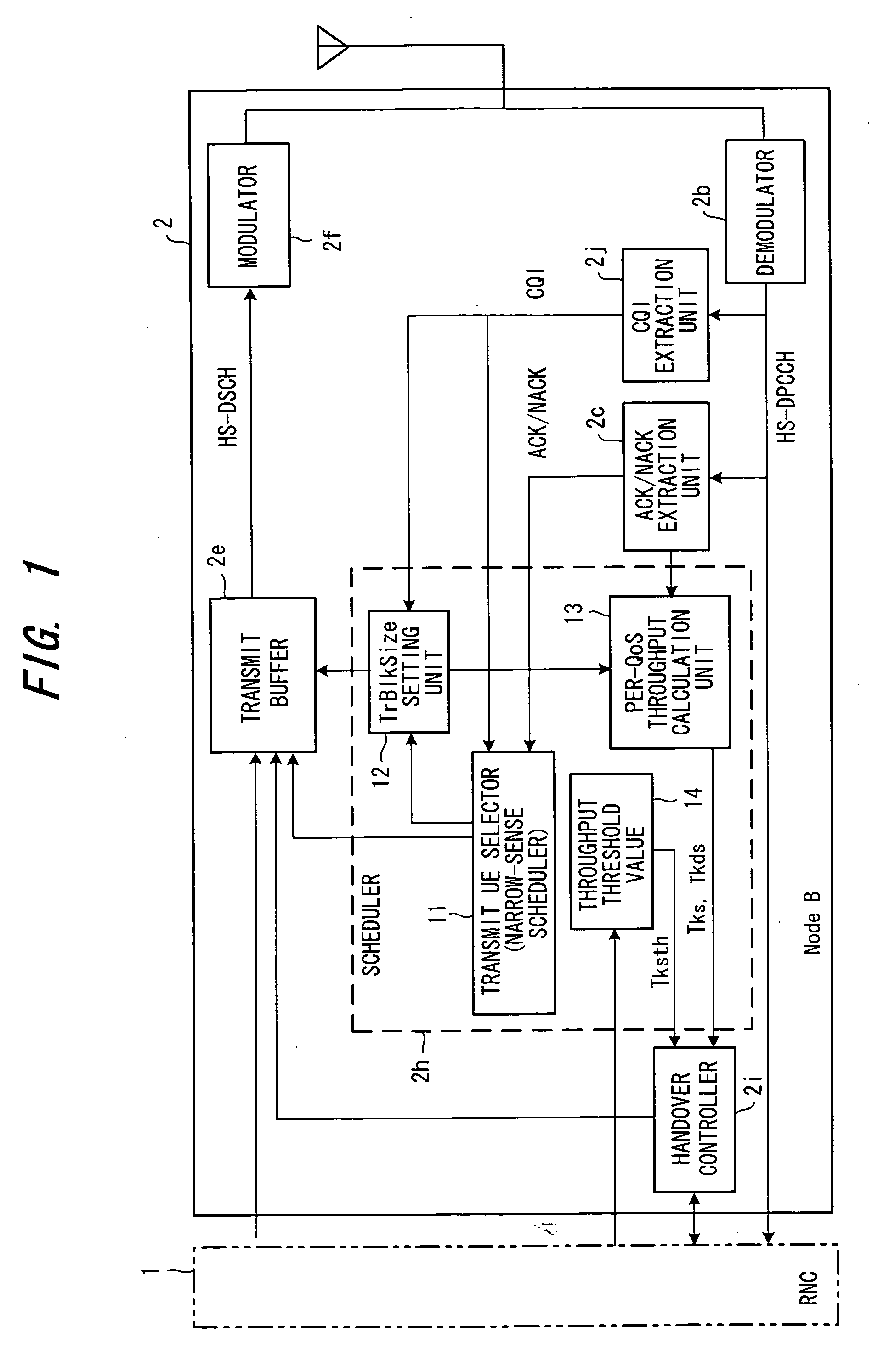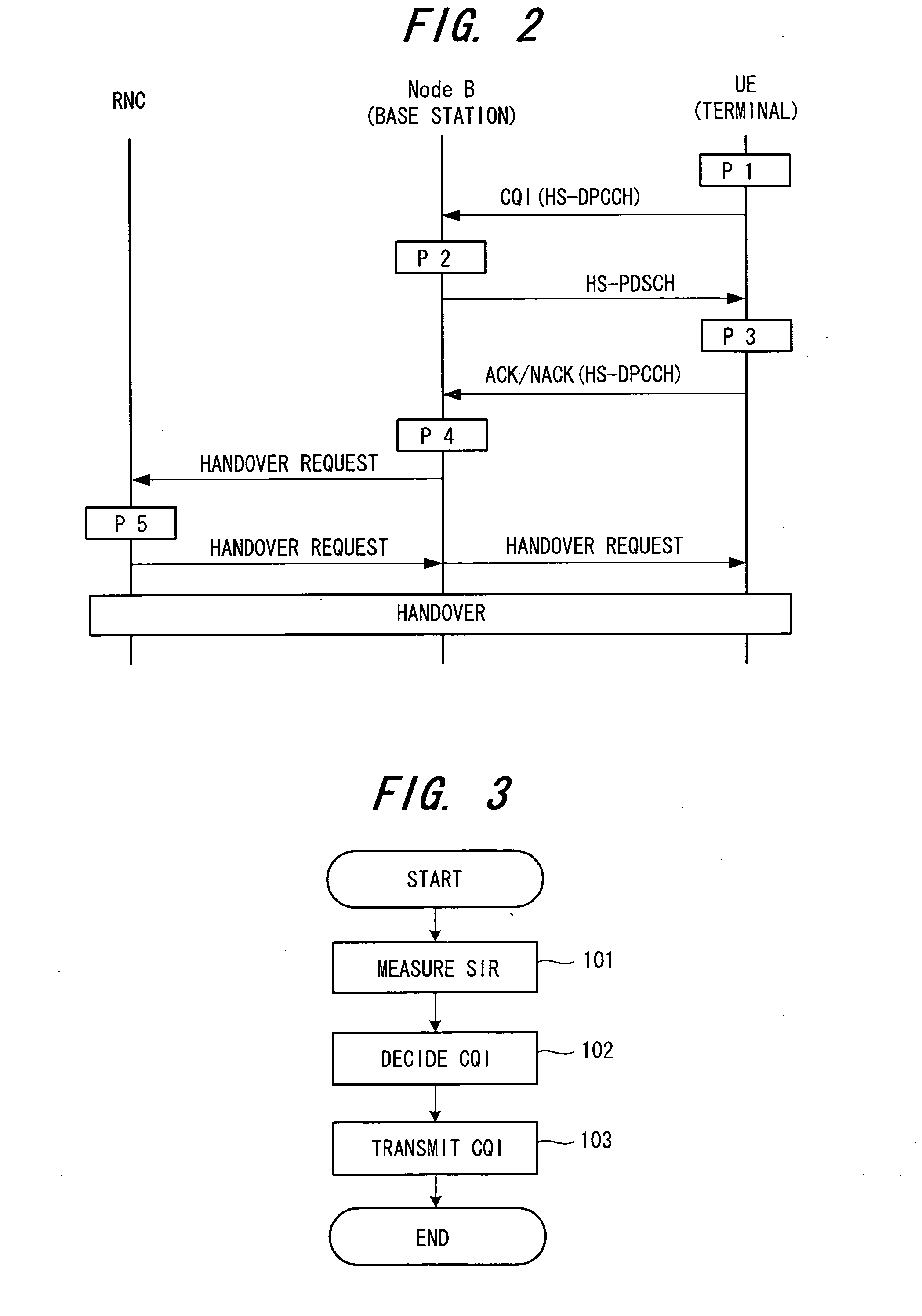Base station apparatus and mobile communication system
a technology of mobile communication system and base station, which is applied in the direction of electrical equipment, transmission monitoring, wireless commuication services, etc., can solve the problems of affecting the quality of mobile communication, the loss of frame of moving picture, and the loss of call in the middle of communication and quality
- Summary
- Abstract
- Description
- Claims
- Application Information
AI Technical Summary
Benefits of technology
Problems solved by technology
Method used
Image
Examples
first embodiment
(A) First Embodiment
[0111]FIG. 1 is a structural view of a first embodiment in which throughput (transmission speed) is calculated on a per-service basis and handover is performed based upon this throughput, FIG. 2 illustrates an example of a protocol and FIGS. 3 to 8 illustrate examples of processing flow. FIG. 3 illustrates the processing flow of processing P1 in the protocol of FIG. 2, FIG. 4 illustrates the processing flow of processing P2, FIG. 5 illustrates the processing flow of processing P3, FIGS. 6 and 7 illustrate the processing flows of processing P4, and FIG. 8 illustrates the processing flow of processing P5. Components in FIG. 1 identical with those of the prior art described in FIG. 57 are designated by like reference characters.
[0112] A case in which it is assumed that communication is performed between base station Node B and terminals UE1 to UEn (not shown) and is implemented by HSDPA of W-CDMA will be described below as one example.
[0113] First, as will be illu...
second embodiment
(B) Second Embodiment
[0143] In the first embodiment, the base station Node B exercises handover control, decides the necessity of handover and the terminal to be handed over and requests the radio network controller RNC to perform handover. However, all of this processing can be brought to the RNC.
[0144]FIG. 12 is a structural view of a second embodiment, FIG. 13 is an example of a protocol in the second embodiment and FIGS. 14 to 16 illustrate processing flow. Only portions that are different from the first embodiment will be described below. In the protocol of FIG. 13, processing P1 to P3 is the same as that of the first embodiment, and processing P41, P51 is different from that of the first embodiment. FIG. 14 shows the processing flow of processing P41, and FIGS. 15, 16 show the processing flow of processing P51.
[0145] In the second embodiment, the required throughput Tkds with respect to service quality QoS, the actual throughput Tks for every UE and every QoS and the through...
third embodiment
(C) Third Embodiment
[0152] A third embodiment has a controller for every carrier frequency and executes decentralized processing of handover solely within the base station.
[0153]FIG. 17 is a structural view of the third embodiment, FIG. 18 is an example of a protocol in the third embodiment and FIGS. 19, 20 illustrate processing flow. In the protocol of FIG. 18, processing P1 to P3 and P5 is the same as that of the first embodiment, and processing P42 is different from that of the first embodiment. FIGS. 19, 20 show the processing flow of processing P42.
[0154] In the first and second embodiments, management and control of handover are carried out at a higher layer (e.g., the RNC). In the third embodiment, however, control and management of handover are performed by the base stations or by the transceivers within the base stations, as indicated by the arrow symbols between the handover controllers. That is, decentralized autonomous control is performed and not unified control by th...
PUM
 Login to View More
Login to View More Abstract
Description
Claims
Application Information
 Login to View More
Login to View More - R&D
- Intellectual Property
- Life Sciences
- Materials
- Tech Scout
- Unparalleled Data Quality
- Higher Quality Content
- 60% Fewer Hallucinations
Browse by: Latest US Patents, China's latest patents, Technical Efficacy Thesaurus, Application Domain, Technology Topic, Popular Technical Reports.
© 2025 PatSnap. All rights reserved.Legal|Privacy policy|Modern Slavery Act Transparency Statement|Sitemap|About US| Contact US: help@patsnap.com



